
Home |
Staff |
Curriculum |
Pupils |
History |
Fixtures |
News |
 |
Introduction
The introduction of the Primary School Curriculum (1999) represents a major
departure in the history of primary education in Ireland. It is the culmination
of many years of development and planning that involved all the partners and
interests in primary education.
The last major revision of the curriculum for primary schools was Curaclam na Bunscoile (1971). Sense then there has been a combination of educational, economic, social and cultural developments in Irish society and cultural developments in Irish society, these developments have been taken into account in this revision.
The process of revising the curriculum began with the work of the Review Body on the Primary Curriculum, which published its report in May 1990. They report constituted a detailed appraisal of the 1971 curriculum and provided the basis for the redesign and restructuring that is presented in this curriculum.
The curriculum incorporates current educational thinking and the most innovative and effective pedagogical practice. It represents a process of revision that is both evolutionary and developmental. The curriculum is designed to cater for the needs of children in the modern world, and its introduction is an exciting opportunity for change and renewal in primary schools.
| The aims of arts education are; · To enable the child to explore, clarify, and express ideas, feelings and experiences through a range of arts activities. · To provide for aesthetic experiences and to develop aesthetic awareness in the visual arts, in music, in dance and in literature · To develop the child's awareness of sensitivity to and enjoyment of visual, aural, tactile and spatial environment · To enable the child to develop natural abilities and potential, to acquire techniques, and to practice the skills necessary for creative expression and for joyful participation in different art forms. |
|
·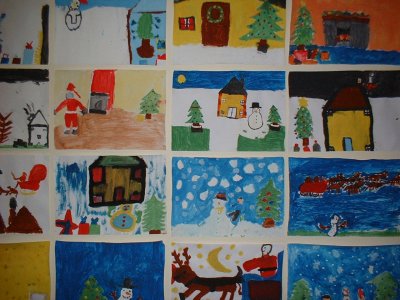 |
To enablethe child to see and to solve problems creatively through imaginative thinking and so encourage individuality and enterprise
3rd and 4th classes' art work, '05
|
· To foster a sense of excellence in and appreciation of the arts in local, regional, national and global contexts, both past and present
|
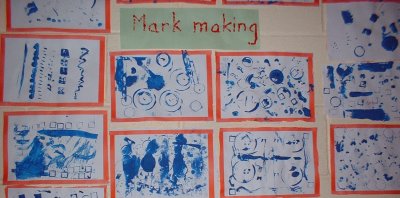 Infant art work, '05 |
1st class art work
|
|
| In Tineteriffe we give the children an appreciation of all strands of the new curriculum including; Drawing, Construction, Clay, Fabric and Fibre, and the 'look and respond' section which gives them and appreciation of famous art and crafts pieces. This is a potter who came on a visit to the children showing tham how she creates beautiful clocks in her workshop. |
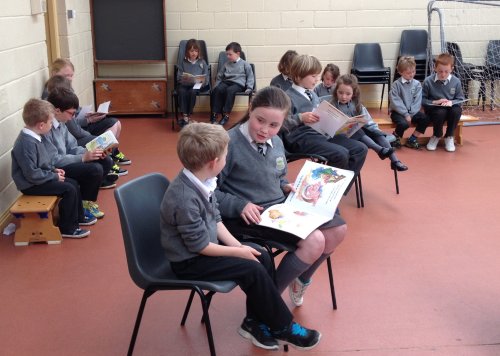 |
Because of its pervasive influence, English is not only concerned with language learning but also with learning through language. The curriculum is structured into four strands.Within each of the strands below are elements of reading, writing and oral work. Receptiveness to language Competence and confidence in using language Developing cognitive abilities through language Emotional and imaginative development through language. |
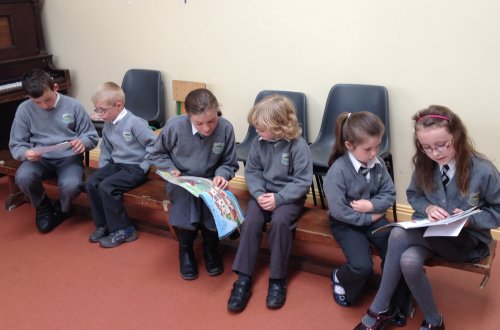 |
 |
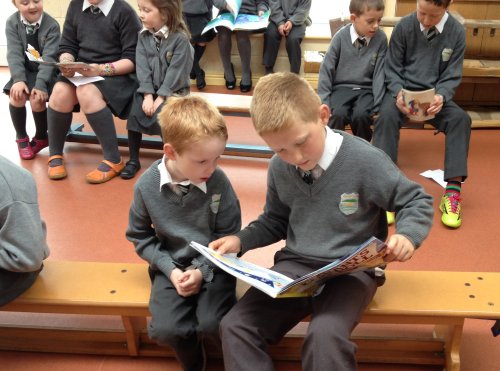 |
Paired Reading, 3rd and 4th classes enjoying reading stories for junior and senior infants, May 2014! |
In Tineteriffe N.S. we are fortunate to have a beautiful library to support the new curricuulum. Each class has access to this facility at least once a week and choose books for their own personal reading.
There are strong elements of make-believe in all children's play. The primary task of the teacher of drama, therefore is to preserve and encourage this desire to make-believe while at the same time extending it to other areas of life and knowledge.
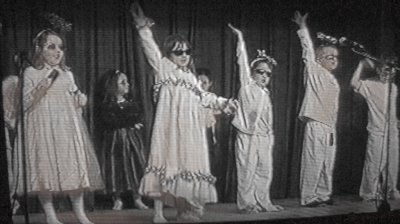 |
In Tineteriffe there is a strong tradition of drama, particularly evident in the many Christmas performances. In the new building we are fortunate to have a hall which allows us the necessary space to teach the drama curriculum.
The 'little angels' from first class in their Christmas performance, '05 |
Irish
The Irish curriculum is divided into four strands; listening, speaking, reading and writing. The emphasis is on developing the sopken language with reading introduced in second class. There are themes chosen to develop these skills e.g. shopping, the weather, food etc.
The Physical Education programmme is divided into six strands.
| Athletics; The athletics section provides a variety of opportunties to engage in the natural activities of running, jumping and throwing. Running activities are devised to encourage children to accept challenges to their personal performances. Throwing activities use objects aof various shapes and weights to improve techniques, accuracy and distance. |
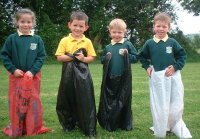 |
 |
Dance; The dance programme involves the child in a range of creative and folk dance. When creating dance the child explores a range of body parts, body actions and body shapes. |
| Gymnastics Children explore movement on the floor and when negotiating a variety of equipment. As they progress they are encouraged to strive for more control over their movements and to repond to more complex tasks. |
|
Games; As skills develop they lead into mini-games. As the child progresses to more formalised games, skills such as possession, teamwork, attack, defence and use of space are developed.A balanced programme ensures that the child experiences a wide variety of activities that provide enjoyment and challenge and that foster a lifelong interest. |
| Outdoor and Adventure Activities; These are the facets of the physical education programme concerned with walking, cycling, camping and water-based activities, orienteering and outdoor challenge activities. |
 |
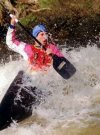 |
Aquatics; This programme is concerned with gaining competence and confidence near, under and on water. The term aquatics is used to include not only the teaching of swimming strokes but provision of opportunities for enjoyment of water play and other aspects of aquatics. |
| The letters in S.P.H.E stand for Social, Personal, and Health Education. As a subject it is concerned with assisting pupils to develop knowledge, skills and attitudes that will empower them to live healthy lives. One part of the programme is the section which would have been previously covered as R.S.E. (relationship and sexuality education). This work is covered in a two year cycle and the R.S.E. programme will be taught in the Easter term, '05 and covered again in the '06-'07 academic year. |  |
Children of all ages and abilities have potential in music, and music education celebrates individual differences among them. The music curriculum comprises three strands; listening and responding, performing and composing. In Tineteriffe there has always been a strong musical tradition, encouraging both singers and musicians to enjoy their talents.Over the last number of years the older classes have participated in the National Childrens Choir, which gives the children the opportunity to sing two and three part harmony and perform with the choir in the University Concert Hall.
S.E.S.E.
Science, History and Geography.
| Environments may be categorised in two broad groupings, natural environments and human environments. |
 science; natural environment |
 history; human environment. |
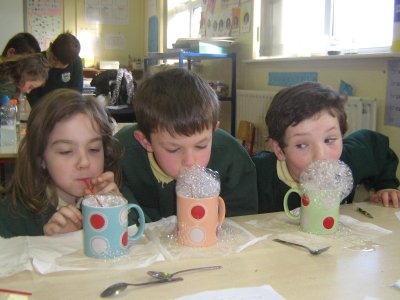 |
 |
Science education enhances children's knowledge and understanding of themselves and the world in which they live. |
| Historical education enables children to investigate and eximine critically events in their own immediate past, the past of their families, local communities and the histories of people in Ireland and other parts of the world. |
|
|
In geographical education, children explore and learn about features in natural and human environments, especially those in the immediate locality. |
 geography, comparing soil samples |
A key characteristic of learning within S.E.S.E. is the involvement of the child in active exploration and investigation of these environments.